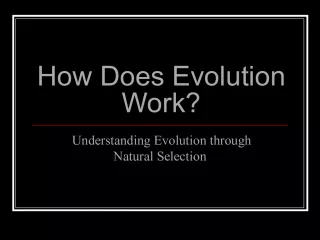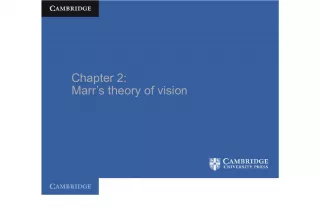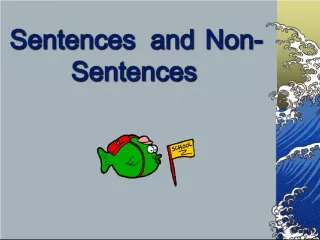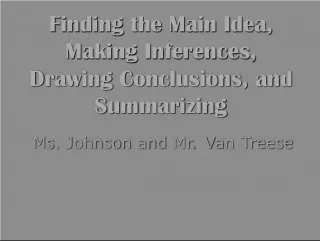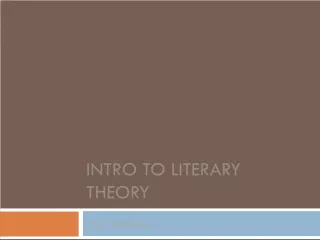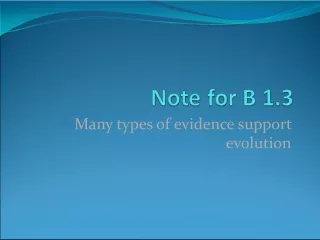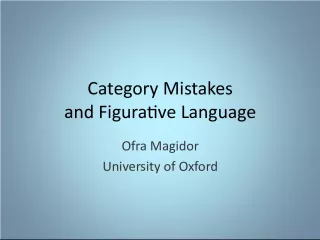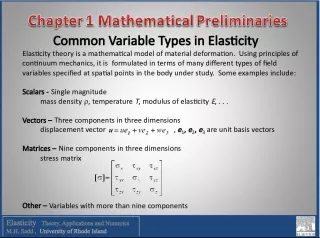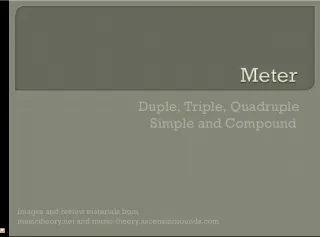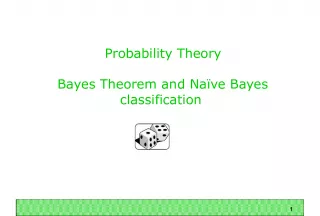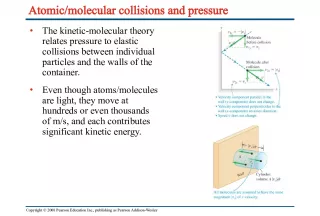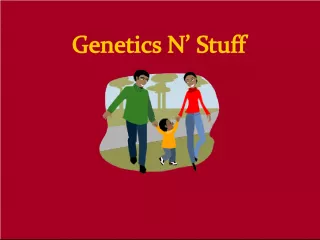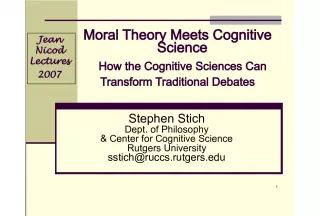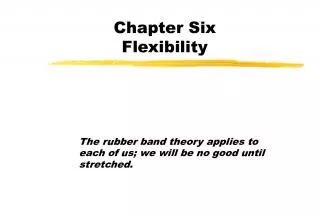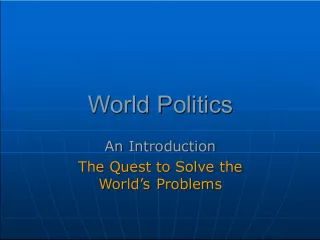The Idea Theory and the Meaningless World
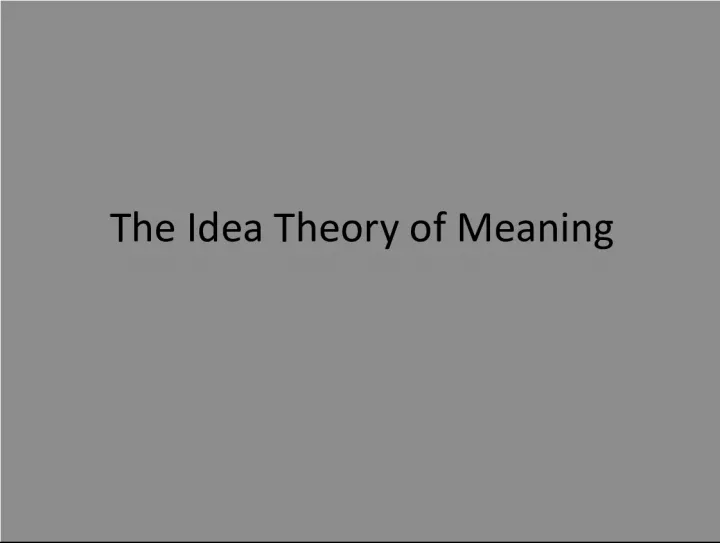

This article explores the Idea Theory of Meaning and its problems as well as the concept of the Meaningless World in Metasemantics.
- Uploaded on | 1 Views
-
 tracy
tracy
About The Idea Theory and the Meaningless World
PowerPoint presentation about 'The Idea Theory and the Meaningless World'. This presentation describes the topic on This article explores the Idea Theory of Meaning and its problems as well as the concept of the Meaningless World in Metasemantics.. The key topics included in this slideshow are Idea Theory, Metasemantics, Conformal Theory, Meaningless World, Problems,. Download this presentation absolutely free.
Presentation Transcript
1. The Idea Theory of Meaning
2. Outline 1. Metasemantics 2. The Conformal Theory 3. The Idea Theory 4. Problems for the Idea Theory 5. Summary
3. 1. METASEMANTICS
4. The Meaningless World Most things in the world dont have meanings. Rivers and lakes and trees and rocks and planets and black holes and electrons none of these things have meanings. Theres nothing that a river is about, there is nothing that a lake represents, a tree cant be true or false.
5. Meaningful Artifacts A very small number of things, however, do have meanings/ are about or represent other things. Many of these meaningful things are human artifacts, like maps, diagrams, paintings, icons, etc. In addition, there are linguistic and mental representations.
6. Language All normal human beings, and most abnormal human beings, speak a language. First languages dont need to be taught; they come naturally to us. A sentence like The cat is on the mat has a meaning; it is about a certain cat and a certain mat; and it is true if the cat its about is on the mat its about, and false otherwise.
7. Mental Representation Thoughts too are representational. I can think about cats, and I can think that a cat is on a mat. Unlike language, its plausible that a large number of non-human animals have representational thoughts. Almost certainly dolphins and dogs, and maybe even bees and ants.
8. Metasemantics Since most things arent meaningful, and only a few things are, its reasonable to ask: why do things like maps, sentences, and thoughts have meanings and rivers, lakes, and trees have no meanings? And why, for example, is a map of Hong Kong a map of Hong Kong , rather than (say) a map of Kuala Lumpur ? Why do meaningful things have the meanings they do rather than some other meaning?
9. Metasemantics Metasemantics (metaphysical semantics, the metaphysics of meanings) is the part of philosophy of language that tries to answer the question: Why [in virtue of what] do meaningful things have the meanings they do, rather than some other meaning, or no meaning at all?
10. Original vs. Derived Intentionality A historically popular strategy for approaching this question has been to draw a distinction between original and derived intentionality (representation).
11. Original vs. Derived Intentionality Minds (more accurately: thoughts) have original intentionality. We have to have a real story for them to answer the metasemantic question (why they mean what they do). Other non-mental representations on the other hand, like diagrams and sentences, have derived intentionality. They mean what they do because they inherit their meanings from our thoughts.
12. 2. THE CONFORMAL THEORY
13. Aristotle on Hylomorphism According to Aristotle, substances are composed of matter + form. Example: a house is a substance. The matter of the house is the bricks, cement, plaster, wood, and so forth. But the house is not just the bricks and cement, etc. It is those bricks, cement, plaster, etc. arranged in a certain way: with a certain form.
14. The Conformal Theory of Representation Aristotle held an obscure doctrine of the identity of the knower with the known. The basic idea seems to be this. When I think of a house, for instance, my soul (i.e. my matter) takes on the form of a house. Thus, even though I (me, my soul, my matter) am distinct from a house (its matter), I represent the house because it and my soul have literally the same form (the form of a house).
15. Aristotle on Linguistic Representation Furthermore, Aristotle thought that spoken language was an outward sign of the state of ones soul. So the (spoken) word horse was a sign of my soul having the form of a horse. So we can say that horse represents horses, because it is a sign of a state of my soul that represents horses (by identity of form with them).
16. Problem for the Conformal Theory Aristotles greatest medieval follower, St. Thomas Aquinas, tried to deal with a problem in the conformal theory. I represent a rock by having the same form as a rock. So why doesnt the rock represent me, since it and I have the same form, and representation = sameness of form?
17. Intentional Presence The solution was that the rock-form was not really present in me, it was only spiritually present. Spiritually present forms represent really present ones, but not vice versa. (Incidentally, this is also the explanation for why even though I have the form of a rock, I dont look anything like a rock.)
18. The New Science The 17 th Century saw the rise of corpuscularianism. It was a lot like Greek atomism, except whereas atoms are essentially indivisible, corpuscles could theoretically be divided. Notable corpuscularians were Robert Boyle, Isaac Netwon, Thomas Hobbes, and John Locke.
19. Corpuscularianism The view was that everything is made out of corpuscles microscopic little bits that had a certain shape, size, and momentum. However, the corpuscles did not have color, taste, smell, sound, or warmth. These other qualities were explained as the effects of the corpuscles on our sensory organs. For example, heat is just the motion of corpuscles, but this motion causes us to experience the sensation of warmth.
20. The Unreality of Tastes, Colors, etc. I think that tastes, odors, colors, and so on are no more than mere names so far as the object in which we place them is concerned, and that they reside only in the consciousness. Hence if the living creature were removed, all these qualities would be wiped away and annihilated (Galileo, The Assayer).
21. Problems for the Conformal Theory But if colors, for example, exist only in the mind, then it cannot be true that when I represent a white horse, my soul has the same form as a white horse. There are no white horses . There are horses that cause me to experience whiteness when light bounces off of them. But the whiteness itself depends on me, the observer. Whiteness exists only in minds.
22. 3. THE IDEA THEORY
23. The Idea Theory The new scientific developments called for a new theory of representation. Many philosophers, including Descartes, Hobbes, and Locke adopted an idea theory to account for representation.
24. Locke on The Idea Theory Words are sensible signs, necessary for communication of ideas. Man, though he have great variety of thoughts, and such from which others as well as himself might receive profit and delight; yet they are all within his own breast, invisible and hidden from others, nor can of themselves be made to appear. The comfort and advantage of society not being to be had without communication of thoughts, it was necessary that man should find out some external sensible signs, whereof those invisible ideas, which his thoughts are made up of, might be made known to others.
25. Comparison with the Conformal Theory For Aristotle and Aquinas, a mind/ soul represents an object by sharing its form. Language represents by indicating the state of the soul. The idea theory introduces a new element. The mind represents a thing by having an idea that represents that thing. A word represents by indicating an idea present in the mind.
26. The Nature of Ideas What are these ideas then? According to Locke, ideas are the pictures drawn in our minds (Essay, II.x.5). An idea of a horse, then, is very much like a picture, image, or painting of a horse. Compare Hume: By ideas I mean the faint images of [perceptions] in thinking and reasoning (Treatise, I.i.1).
27. Resemblance Theory of Representation Importantly, ideas dont represent by sharing forms with their intentional objects (as weve seen, science doesnt allow this). Instead, just like paintings, ideas represent by resembling their intentional objects. An idea of a horse is like a picture of a horse, and it represents a horse as a picture does: by resembling it.
28. Resemblance Theory The resemblance theory is really the important part of the idea theory, because it does all the explaining. Why does word W mean X? Because W is associated with idea I and I means X. But why does I mean X? Because I resembles X.
29. Corpuscularianism Redux The idea theory cant exactly escape the problem the conformal theory faced. A painting of a red wall resembles a red wall in the sense that if you looked at both, the appearances they generate in you would be the same, because both share a feature they reflect light at a wavelength between 630 and 700nm. But surely (a) you dont look at your mental states and (b) your mental states dont reflect light!
30. Primary vs. Secondary Qualities Locke famously draws a distinction between primary and secondary qualities, where the primary qualities of an object are those ascribed to it by corpuscularianism (shape, size, momentum, and what Locke calls solidity), and the secondary qualities are propensities of the object to cause certain appearances in us (like the feeling of warmth).
31. Primary vs. Secondary Qualities Locke thought that ideas of primary qualities really did resemble those primary qualities, but the resemblance theory was false for secondary qualities. Ideas of primary qualities represent by resembling; ideas of secondary qualities represent in some other way. (Locke identified this way as causal an idea of a secondary quality represents the idea that quality has a propensity to cause. This doesnt work.)
32. Only Ideas Can Resemble Ideas Berkeley, however, argued that no idea resembled anything physical or material; ideas only resembled ideas. Ideas arent spatial and thus they dont have shapes, sizes or momenta. Is your idea of a big elephant bigger than your idea of a small elephant? Ideas dont even resemble the primary qualities, like shape, size, and momentum.
33. Idealism For Berkeley, this wasnt a bad thing, and it didnt show that the idea theory or the resemblance theory were false. What it showed, instead, was that our thoughts were not about a physical world, but of a world made of ideas. My idea of a table was an idea of an idea, because tables are ideas. (This is how we are able to represent them, because ideas can resemble other ideas.)
34. Locke on General Terms It is not enough for the perfection of language, that sounds can be made signs of ideas, unless those signs can be so made use of as to comprehend several particular things: for the multiplication of words would have perplexed their use, had every particular thing need of a distinct name to be signified by. To remedy this inconvenience, language had yet a further improvement in the use of general terms, whereby one word was made to mark a multitude of particular existences.
35. Abstract Ideas Lockes picture here is that there are terms for particular things (names) and terms that dont apply to any one particular thing, but apply equally to groups of things (terms like dog or house these arent names of a particular dog or a particular house). If we accept the idea theory, then, we have to accept that there are abstract ideas not mental pictures of a particular person, but mental pictures that resemble equally a group of things.
36. Berkeley vs. Abstract Ideas Berkeley, however, argues that abstract ideas are impossible. The abstract idea of a man is supposed to apply equally to a tall man and a short man; a black man and a white man; a skinny man and a fat man; well-dressed man and a pauper, etc. But no picture resembles equally all such men, as any picture of a man depicts him as either skinny or fat, but not both and not neither.
37. Berkeley Again, this didnt lead Berkeley to reject the idea theory, only to (once again) place a severe limit on what we can have ideas of. Just as we cant have ideas of non-ideas (because non-ideas cant resemble ideas) we cant have ideas of abstract things, because mental pictures are always determinate and never abstract (like regular pictures).
38. Hume: Impressions and Ideas David Hume took Berkeleys style of austere empiricism to its logical extreme. Hume makes a distinction that wasnt made by Locke and Berkeley between impressions and ideas. Impressions are sensations or perceptions or sense experiences. Things like seeing red or feeling pain. The idea of red is not the same thing as seeing red though: for Hume, all (simple) ideas are copies of impressions.
39. The Tribunal of Experience Hume then proposes the tribunal of experience. For each supposed idea, we ask: (a) Is it copied from an impression? If so, which one? [No answer? Go to (d).] (b) If not, is it a complex idea, built out of simpler ones? (c) If so, repeat (a) and (b) for each of its parts. (d) If not, its not really an idea at all!
40. Hume vs. Causation Hume notoriously targeted causation for the tribunal of experience. Imagine the following sequence of events (that is, have the following sequence of ideas in your head): first you have an idea of ball A headed toward ball B. Then A hits B and causes B to move away. Got it? OK, now imagine this other sequence of events: A is moving toward B, A and B touch, and B moves away on its own (not because A caused it).
41. Hume vs. Causation Whats the difference here? Hume argued that there wasnt one. You couldnt see one event causing another, and since all ideas were copies of impressions (for Hume), you couldnt have an idea of one event causing another.
42. Other Imperceptibles There were some other problems with the idea theory involving unobservables. How is your idea of a black hole or an electron anything like those things? Even more straightforwardly, how is your idea of (for example) Moses anything like Moses (theres no ancient statues or other representations of him)? But it seems we do have an idea of Moses, at least in the sense that we can think about him.
43. 4. PROBLEMS FOR THE IDEA THEORY
44. Concepts vs. Propositions We can draw a distinction between concepts and propositions. Concepts are representations of things or qualities: so I can have a concept of Obama, or a concept of red, or a concept of a horse, or a concept of a concept. Importantly, concepts are not truth-evaluable. My concept of red isnt true, and it isnt false either. It might be more or less accurate.
45. Propositions We can say that when I think of a thing, or think about a thing, then I am entertaining a concept. However, when I think that such-and-such, I am entertaining a proposition. For example, I can think that Obama is the US president, or think that grass is red, or think that the concept of a horse is not a concept. Propositions are truth- evaluable: when I think that grass is red, my thought is false. (Not so when I just think of red.)
46. The idea theory seems to have trouble distinguishing concepts and propositions. According to the idea theory, thought is having ideas, and ideas are like mental pictures. Are mental pictures truth-evaluable? If they are, then concepts arent ideas. If they arent, then
47. Resemblance as an Equivalence Relation Resemblance, like identity, is an equivalence relation, meaning its reflexive, symmetric, and transitive: Reflexive: for all X, X resembles X. (Everything resembles itself.) Symmetric: for all X and Y, if X resembles Y, then Y resembles X. Transitive: for all X, Y, and Z, if X resembles Y and Y resembles Z, then X resembles Z.
48. Representation is Not Reflexive Unfortunately, representation is not an identity relation: Its not reflexive: you can have a representation that represents itself (for example, a map of Hong Kong that includes the maps location), but most representations dont represent themselves. You can have a painting of a horse, that is not a painting of a painting of a horse (not a painting of itself).
49. Representation is Not Symmetric Representation is typically not symmetric, as most of what gets represented is not representational. My thoughts represent lakes and rivers and trees, but lakes and rivers and trees dont represent my thoughts (because they dont represent anything). And even when I do represent representations (when I think about a painting, say), usually they dont represent me or my thoughts (most painters have never even heard of me).
50. Representation is not Transitive Finally, representation isnt transitive. The directory at the museum might represent the location of a certain Picasso painting. That painting could represent a horse. But the directory doesnt represent any horses, it only represents paintings.
51. We could try a strategy similar to Aquinas in dealing with the reflexivity problem for the conformal theory. [Does that work?]
52. Indeterminacy and Error Another class of problems for resemblance theories of representation involve indeterminacy and error.
53. The Man on the Hill Wittgenstein remarked that A picture which corresponds to a man walking up a hill forward corresponds equally, and in the same way, to a man sliding down the hill backward. [Philosophical Investigations] Still, there can be a picture that is a picture of a man going up a hill and not sliding down it. Representation can be more determinate than resemblance.
54. Twins Or suppose you met a woman last night and I met her twin. You and I both have memories (mental representations) of the women we met, and lets suppose those mental images are identical in every respect (because the twins look exactly alike and were wearing identical clothing). However, my memory is of the twin that I met, and not the one that you met, and vice versa.
55. Indeterminacy of Resemblance In both the man-on-the-hill case and the twin case, what we have is one representation that exactly resembles two distinct things (man going up vs. man going down, twin #1 vs. twin #2). If representation = resemblance, then my memory (for example) should represent both twins equally. But I only have a memory of one of them; my memory represents only one of them.
56. Error Consider a revised version of the twins case: you and I separately meet each of two twins. They are exactly alike except that the twin you meet has a scar on her left cheek and mine has no scar. However, the next day I falsely remember my twin as having a scar on her left cheek. Then the resemblance theory says my memory is about the twin you met (someone Ive never met in my entire life).
57. Massive Error Imagine that I have a pen pal whom Ive never met, or seen a picture of. Over the course of our correspondence, I develop an elaborate mental image of her: what color her hair is, how big her nose is, etc. Suppose that my mental image is completely wrong and doesnt resemble my pen pal at all. On the resemblance view, it would seem that I was incapable of thinking about her, for example, I couldnt think: Oh, heres another letter from my pen pal!
58. Conceptual Competence One direction for a solution to the problem of error is to say that my idea of my twin or my pen pal is only a partial idea or is an incompletely grasped idea or something like that. That may be true, but this doesnt really resolve the problem. Why is the idea partial or incomplete as it is an idea of my pen pal, rather than of someone else whom it more closely resembles, or of a mere fiction?
60. Fodor vs. the Image Theory Fodor holds that thought happens in a language (the language of thought) rather than in images the ideas of the idea theorist. One argument goes like this: you can see a Necker cube in two different ways. Theres one picture that corresponds to two ideas. But if ideas are just mental pictures, what two different mental pictures correspond to the two different ways you can see the one physical picture?
62. Seeing vs. Seeing-as What the Necker cube example suggests is a more general problem. You can look at the Fischer cow and not see that it is a cow. When you see the picture as a cow, your perception changes. But if your idea of the picture is just a copy of that picture in your head, what about it changes such that once it was just squiggles and then its a cow?
63. Fodor vs. the Image Theory Another argument is that the idea theorist doesnt have a good story about my thought that I am NOT wearing a red shirt. Is it a picture of me wearing a blue shirt? Or a green one? What if Im just thinking that Im NOT wearing a red one, but not thinking of what color shirt I am wearing? Notice how No smoking signs have to resort to non-pictorial symbols. You cant just have a sign where someone isnt smoking.
64. Perhaps the biggest problem for the idea theory is that in most cases where x resembles y, x does not represent y. Two cows for instance might resemble each other much more than our ideas, paintings, or photographs resemble them. Yet we have no inclination to say that the cows represent each other.
65. Hilary Putnam points out an interesting case. Imagine two lines in the sand. One has been drawn by a human with the intention of tracing the figure of Winston Churchill, and it resembles him (or his figure) a lot. The other has been traced by an ant just wandering aimlessly in the sand. But imagine that the ants line is identical to the humans. We think the human-drawing represents Churchill, but the ant-line doesnt.
66. This suggests that drawings, paintings, and so forth dont represent things by resembling them . They represent things on the basis of our intentions. But the entire motivation of the idea theory was to model ideas on drawings and paintings. Those things represent by resembling, and thats how ideas were supposed to work as well.
67. SUMMARY
68. The Idea Theory The idea theory is an attempt to answer the question: why do words mean what they do, rather than something else, or nothing at all. Its a metasemantic theory. According to the theory, words are associated arbitrarily and conventionally with ideas, which are construed as something like little colored pictures in the mind.
69. Representation as Resemblance This is not the whole story, because it doesnt explain why the word dog is true of dogs. This is a question about meaning (is true of is a semantic relation). So the idea theory further says that dog is true of dogs, because the idea associated with dog most closely resembles dogs (as opposed to cats, or nothing at all).
70. The Idea Theory in History The idea theory was influential, especially among the British Empiricists of the 17 th and 18 th Centuries. Philosophers were willing to abandon abstract ideas, ideas about cause and effect, and some even maintained that thought about an external world was impossible that since only ideas resemble ideas, what we think about when we think about tables and chairs and mountains are ideas.
71. Problems Eventually, however, the idea theory came into ill-repute. There were lots of reasons, and we discussed a few: Theres a distinction between concepts and propositions that is blurred on the idea theory. Resemblance is an equivalence relation, representation is not. So representation cant be identical to resemblance.
72. Problems Representation can be more determinate than resemblance: we can think of a man going up a hill, even if the image equally applies to a man sliding down; we can think of a Necker cube with one side to us, even if the image equally applies to a cube with the other side to us. In general, resembling things simply dont represent one another.

